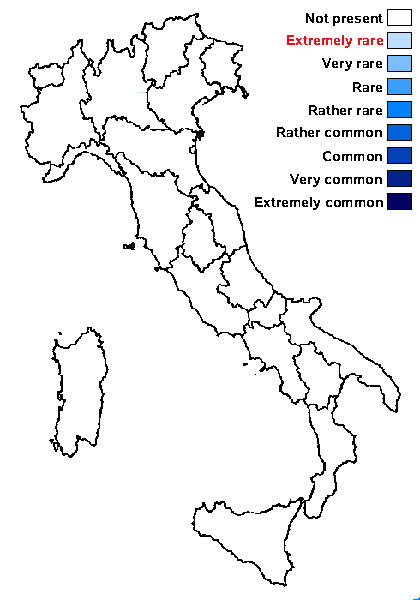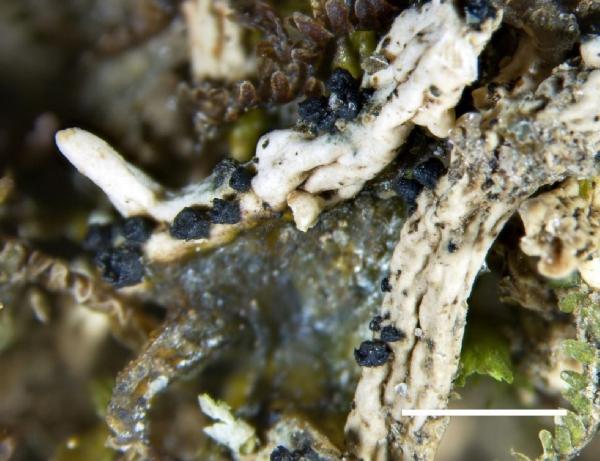Arthrorhaphis muddii Obermayer
Nova Hedwigia, 58, 3-4: 309, 1994
Synonyms:
Distribution:
Description: Thallus crustose, verrucose, whitish grey to greenish grey, often inconspicuous, developing on the thalli of Dibaeis baeomyces. Apothecia lecideine, black, 0.2-0.4(-0.5) mm across, at first hemispherical, but soon turning flat, clearly constricted at base, with a protruding, thin, sometimes shiny margin, later almost immarginate. Proper exciple dark brown to black and 15-25 µm thick in outer part, greenish brown and 20-35 µm thick in inner part; epithecium brownish in upper part, green in lower part, strongly inspersed with oil droplets, c. 25 µm high; hymenium colourless, without oil droplets or with oil droplets only in upper part, c. 150 µm high; paraphyses c. 1.5 µm thick, branched only in upper part, the distance between septa at mid-level (12-)14-18 µm; hypothecium colourless to very pale brown. Asci 8-spored, clavate, the wall of young asci with a poorly developed tholus and an ocular chamber, that of mature asci more or less uniformly thick throughout. Ascospores (7-)10-12(-15)-septate, hyaline, acicular, (55-)65-80(-90) x 3.5-4.5(-5) µm, uniseriately arranged in the asci. Photobiont chlorococcoid. Spot tests: thallus K-, C-, KC-, P-, UV- (but the host thallus can be UV+ orange). Chemistry: without lichen substances.Note: a non-lichenized, lichenicolous fungus growing on the thalli of Dibaeis baeomyces, known from Western Europe and the Northern Alps; to be looked for in Italy.
Growth form: Lichenicolous fungus
Substrata: soil, terricolous mosses, and plant debris
Reproductive strategy: mainly sexual
Most common in areas with a humid-warm climate (e.g. most of Tyrrenian Italy)
paras Dibaeis baeomyces

Predictive model
Growth form: Lichenicolous fungus
Substrata: soil, terricolous mosses, and plant debris
Reproductive strategy: mainly sexual
Most common in areas with a humid-warm climate (e.g. most of Tyrrenian Italy)
paras Dibaeis baeomyces

Predictive model
 INDEX FUNGORUM
INDEX FUNGORUM
 GBIF
GBIF



